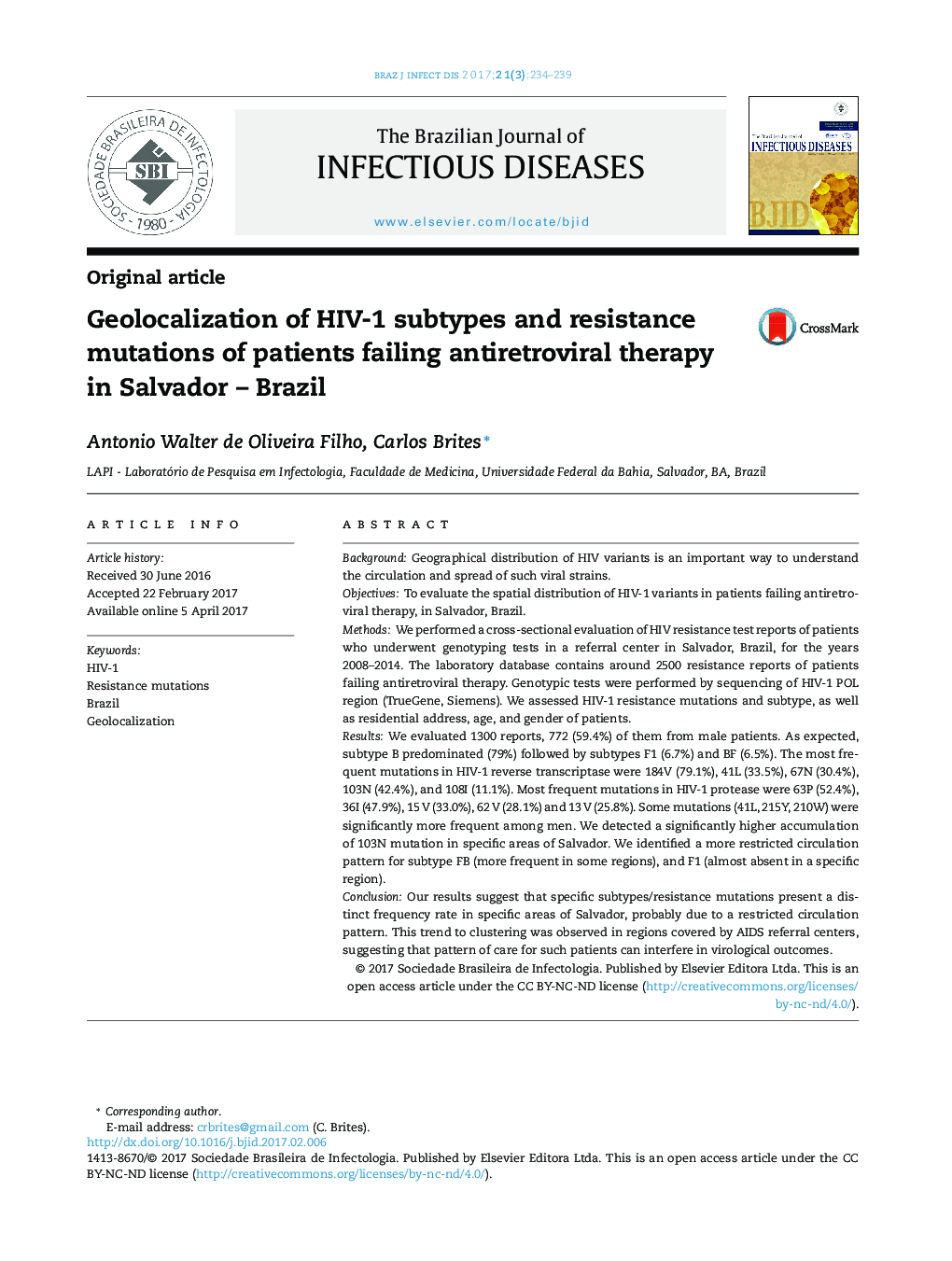| Article ID | Journal | Published Year | Pages | File Type |
|---|---|---|---|---|
| 5665612 | The Brazilian Journal of Infectious Diseases | 2017 | 6 Pages |
BackgroundGeographical distribution of HIV variants is an important way to understand the circulation and spread of such viral strains.ObjectivesTo evaluate the spatial distribution of HIV-1 variants in patients failing antiretroviral therapy, in Salvador, Brazil.MethodsWe performed a cross-sectional evaluation of HIV resistance test reports of patients who underwent genotyping tests in a referral center in Salvador, Brazil, for the years 2008-2014. The laboratory database contains around 2500 resistance reports of patients failing antiretroviral therapy. Genotypic tests were performed by sequencing of HIV-1 POL region (TrueGene, Siemens). We assessed HIV-1 resistance mutations and subtype, as well as residential address, age, and gender of patients.ResultsWe evaluated 1300 reports, 772 (59.4%) of them from male patients. As expected, subtype B predominated (79%) followed by subtypes F1 (6.7%) and BF (6.5%). The most frequent mutations in HIV-1 reverse transcriptase were 184V (79.1%), 41L (33.5%), 67N (30.4%), 103N (42.4%), and 108I (11.1%). Most frequent mutations in HIV-1 protease were 63P (52.4%), 36I (47.9%), 15 V (33.0%), 62 V (28.1%) and 13 V (25.8%). Some mutations (41L, 215Y, 210W) were significantly more frequent among men. We detected a significantly higher accumulation of 103N mutation in specific areas of Salvador. We identified a more restricted circulation pattern for subtype FB (more frequent in some regions), and F1 (almost absent in a specific region).ConclusionOur results suggest that specific subtypes/resistance mutations present a distinct frequency rate in specific areas of Salvador, probably due to a restricted circulation pattern. This trend to clustering was observed in regions covered by AIDS referral centers, suggesting that pattern of care for such patients can interfere in virological outcomes.
